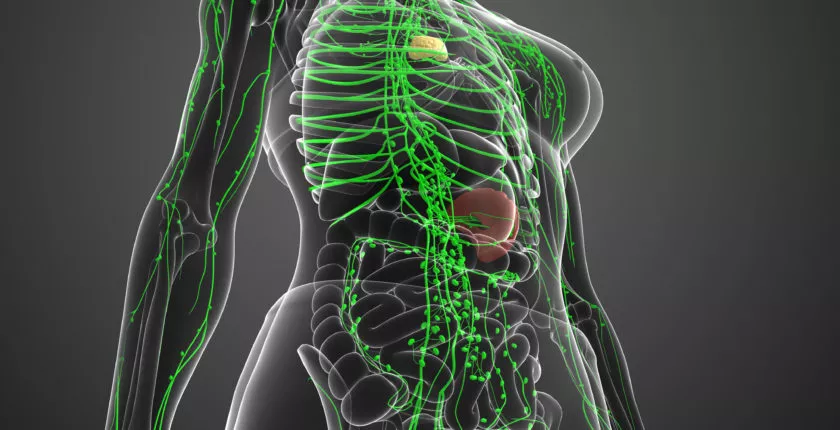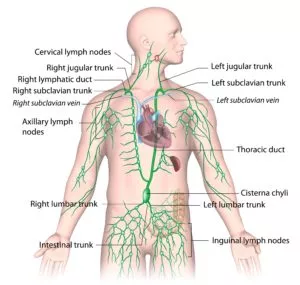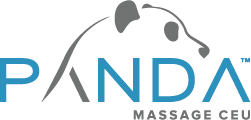A Guide to Lymphatic Drainage Massage for LMTs
- April 23, 2018
- Posted by: massageceu
- Category: CEU continuing education LMT CE Lymphatic Drainage Massage Massage Modalities

As a massage professional, your job is to provide your clients with a soothing and therapeutic massage experience. Whether you use shiatsu techniques, deep tissue massage, or any other bodywork modality, your goal is giving your clients the relief and healing that they need from both the stresses of daily life and various physical ailments.
In order to do this effectively, an important part of your job involves assessing a client’s needs, formulating a treatment plan for that individual client, and eventually reassessing the client’s needs based on their response (or lack of response) to your treatment plan. This is incredibly important regardless of whether a client’s issues are acute or chronic.
With this in mind, some modalities of massage therapy are intended for very specific uses. For example, sports massage is primarily used to aid athletes in recovering from difficult training and preparing for a big competition. Of course, there’s also crossover between modalities. Cupping is a good example of this: while it’s often used for generalized pain relief and the reduction of inflammation, cupping may also be effective for helping athletes recover faster.
Lymphatic drainage massage is a massage modality with a primary purpose and methodology in mind. At the same time, though, it could potentially provide clients with a variety of ancillary health benefits. As a massage LMT (licensed massage therapist), adding lymphatic drainage massage to your toolbox of techniques and strategies could be good for your practice and good for your clients.
Following surgery, it’s not uncommon for surgeons to recommend that their patients seek out lymphatic drainage massage from a qualified massage LMT. This could be a boon for your practice. By advertising your lymphatic drainage massage services, you could acquire post-surgical clients who may then turn into long-term, steady clients after they’ve fully healed from surgery. For clients who have never experienced massage before and are unfamiliar with its full-body therapeutic benefits, the need for lymphatic drainage massage following a surgical procedure can be a great introduction to the world of massage at large.
To sum up, then: adding lymphatic drainage massage to the list of modalities that you’re capable of utilizing with your clients is a great idea. To be clear, you’d need more training in lymphatic drainage than can be provided in a single blog post in order to use it effectively. An online massage CEU course is a great way to learn a technique like this one. However, if you’ve received training in lymphatic drainage massage in the past and are looking to brush up on the topic, this blog post is a great way to do that. Or, if you’re curious about the practice and want to learn more — perhaps because you’re considering signing up for a massage CEU course but aren’t sure if lymphatic drainage massage is something you really want to delve deeper into or not — then this post will give you the overview you need in order to make an informed decision.
In this blog post, we’re going to look at this bodywork modality step by step. Here’s what we’ll cover:
- The lymphatic system: lymph, lymph vessels, and lymph nodes
- Edema and its impact on the lymphatic system
- Lymphatic drainage massage indications
- Contraindications of this modality
- Basic techniques
Ready to learn more? Let’s get started.
What is the lymphatic system?
If you ask just about anyone to describe the function of their major organs, they could probably do so without too much trouble. The same goes for the circulatory system. When it comes to the lymphatic system, though, you’ll find that a lot of people — including your clients — are in the dark about what it is, what it does, and how it works. For this reason, providing your clients with a short anatomy and physiology lesson can be useful in helping them understand what lymphatic drainage massage is and how it works.
 It’s easy to take the lymphatic system for granted, as we hardly ever talk about it. However, without a properly functioning lymphatic system, we quickly become swollen, sick, inflamed, and generally unhealthy.
It’s easy to take the lymphatic system for granted, as we hardly ever talk about it. However, without a properly functioning lymphatic system, we quickly become swollen, sick, inflamed, and generally unhealthy.
Put simply, the lymphatic system is comprised of all of the tissues and organs in the bodies that make and transport white blood cells (and associated lymph fluid). In this broader sense, then, we can think of the lymphatic system as including things other than just lymph vessels and lymph nodes: for example, the bone marrow, spleen, and thymus, where various kinds of white blood cells are produced. For our purposes, though, we’ll be focusing on the lymphatic vessels and nodes.
Lymph vessels and nodes
If you’re already familiar with the idea of blood vessels, then understanding lymphatic vessels should be easy enough. Lymph vessels are similar to blood vessels: they’re the transport system in the body used for circulating lymph from one place to another. When we say lymph in this sense, we’re referring to the clear fluid within the lymphatic system that serves as the carrier for moving white blood cells from place to place.
Along the path that the lymph vessels trace throughout the body, we find a number of lymph nodes. These nodes (also sometimes called lymph glands) are comprised of roundish clumps of lymph tissue, and they serve two important purposes. First, they filter the lymphatic fluid as it moves through the lymph vessels. Second, they provide a convenient storage site for white blood cells.
Their filtration function is especially important. When you have an infection — whether it’s from a wound, the common cold, or any other source — the harmful substances associated with the infection are filtered out, collected, and destroyed inside the lymph nodes. In other words, the bacteria in your system that proliferate when you’ve got a cold will end up in your lymphatic system, and ultimately in your lymph nodes.
This is why we often experience swelling along the base of our head and neck when we’re sick: there are a number of prominent lymph nodes in these locations, and they tend to swell up as they work to filter out and eliminate harmful bacteria and their byproducts.
Similarly, the swelling associated with surgery or injury to a particular part of the body is often associated with the lymphatic system. Let’s take a closer look at what can cause swelling in the body, and how this swelling is related to the function (or dysfunction) of the lymphatic system.
What causes edema, and how is it related to the lymphatic system?
Edema is the medical term for swelling, or retention of fluid. There are various kinds of edema in the body. In general, edema can be caused by any number of issues: kidney disease, liver problems, medication, pregnancy, or various diseases.
Damage to the lymphatic system can result in lymphedema, a particular type of edema. More often than not, lymphedema tends to occur in the arms or legs. The lymphatic system can be damaged by any number of things, including cancer surgery, physical damage resulting from a surgical procedure, or other factors.
Generalized edema can occur when the blood capillaries begin to leak fluid into the surrounding tissue. This fluid builds up, which leads to the visible swelling associated with the condition. In the case of lymphedema, swelling is associated with physical damage to the lymph vessels and/or nodes. When the lymphatic system becomes blocked, fluid will build up rather than filtering and circulating properly. As fluid continues to build due to a blockage, it will “back up” in the system and lead to localized swelling.
Edema can be mild — as in cases where a client is experiencing a tiny bit of swelling around the ankles during pregnancy — but it can also be quite severe. Using massage in severe cases of edema is something that must be done with extreme care, as inappropriate techniques could serve to make the situation worse instead of better.
Edema is treated in a number of ways. In mild cases, doctors will often recommend that a patient simply rest, lift the affected limb, and wait for the swelling to decrease. In more serious cases, a doctor will prescribe a type of drug called a diuretic. This class of drugs works to help the body expel excess fluid at a faster rate (through the urinary system).
In addition to drug therapy, the Mayo Clinic mentions that massage can be useful for relieving edema. With this in mind, let’s take a look at the indications and contraindications of lymphatic drainage massage before we move on to a discussion of the technique itself.
Lymphatic Drainage Massage: Indications
The goal of lymphatic drainage massage is to increase the flow of lymph in the lymphatic vessels and aid in the removal of blockages which can lead to swelling and lymphedema. As lymph flow increases, harmful substances (such as bacteria) are more readily moved from the body and appropriately eliminated.
It’s important to recognize that severe cases of edema should not be treated by massage alone. A properly trained massage LMT can work with a team of other health care practitioners to effectively manage extreme cases of edema, but should not attempt to tackle the problem on their own. That said, proper use of the right techniques can be very effective in reducing edema in certain patient populations.
Lymphatic drainage massage can be indicated for patients who are recovering from surgery. The act of stimulating the flow of lymph throughout the lymphatic system can aid in the healing of bodily tissues. When working with a client who has recently had surgery, it is important to take the necessary precautions when it comes to applying pressure or manipulation around the surgical site itself.
This modality can also be useful for injuries related to sports. Once the initial onset inflammation (that is, acute inflammation) has subsided, lymphatic drainage massage can help return an athlete to full physical functioning in a shorter amount of time than without the use of bodywork.
Additionally, cancer survivors may experience benefits from receiving this form of massage. Cancer treatment often results in lymphedema, which can be debilitating for certain patient populations. With the use of lymphatic drainage massage therapy, a client recovering from cancer treatment can experience reduced swelling and greater mobility. This can then lead to a better overall sense of wellbeing.
Contraindications for Lymphatic Drainage Massage
There are some instances where lymphatic drainage massage is contraindicated. It’s important to identify these instances so as to avoid performing this bodywork modality on clients who will not benefit from it — or who could even suffer further as a result.
Some of the contraindications for lymphatic drainage massage include:
- Congestive heart failure: Without a properly functioning heart, edema might be related to circulatory problems rather than actual blockages in the lymphatic system.
- Thrombosis: With acute thrombosis, blood clots may be present in the circulatory system. Physical manipulation of the lymphatic system can be dangerous.
- Acute inflammation: Bacterial and other pathogenic infections can cause edema. If this kind of acute inflammation is the source of swelling in the tissues, lymphatic massage is contraindicated. Rather than aiding in tissue drainage, bodywork under these conditions can force bacteria and other harmful substances into the lymph system at a rate that the body is not prepared to handle.
Other contraindications for this form of bodywork may include cancer, kidney disease, and active bleeding.
Basic techniques for lymphatic drainage massage
The general approach to this form of bodywork involves a light, repetitive stretching of the skin. When performing lymphatic drainage massage, the skin is stretched in a very specific direction and pattern. Using the correct directionality and pattern, the massage technique can stimulate the flow of lymph fluid in the lymph vessels and nodes.
Pressure is light, and the direction of massage is very important. If the lymph is directed the wrong way, it’s unlikely that you’ll achieve the results you’re looking for. Rhythm and speed are important, too. The lymphatic system operates according to a rhythm, and working in time with it can increase the efficacy of the treatment.
While it’s not possible to become an expert in lymphatic drainage massage from a single blog post, we hope this overview of the lymphatic system, edema, the indications and contraindications of the technique, and the technique itself has been useful.
Are you looking to introduce lymphatic drainage massage or another massage modality into your treatment repertoire as an LMT? If so, Panda™ offers the best online massage CEU courses that you’ll find anywhere. With our combination of unique topics, professional narration, high quality video, and affordable prices, you’re bound to come away with new ideas and techniques that you can implement in your daily practice. Click here to check out our affordable pricing and sign up today!
